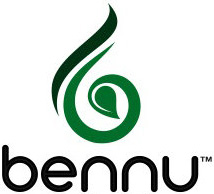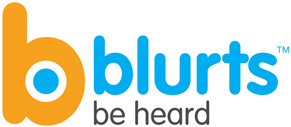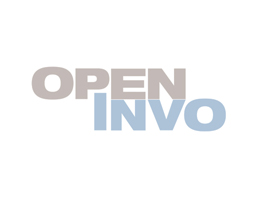After three years of refining BookDirectTM, a hotel reservation search engine used by DMO’s (Destination Marketing Organizations), Andrew Van Luchene knew his little company, JackRabbit Systems, had reached the moment of truth. In early 2010, The Las Vegas Convention and Visitors Authority, the largest and most visible DMOs in the country, was suddenly interested in BookDirect. If JackRabbit could land this business, success was virtually assured. In this case, what happens in Vegas would be heard not just around the country, but also around the world.
Van Luchene did win the Las Vegas DMO and went on to double sales in 2010. He also expects to triple to quadruple sales in 2011 given the company’s current momentum. Born during one of the worst travel slumps in decades and self-funded, JackRabbit is by no means an overnight success story. Its success is the story of perseverance and experience, yielding in the process five questions every entrepreneur should ask themselves before they land their make or break account.
Have you worked out the product kinks?
While every small company dreams of winning the marquee client early on, the truth is that winning it too early can overwhelm a product or service that has not been sufficiently tested from multiple aspects. In the case of Book Direct, Van Luchene and his team had first created the reservation service as a project for the Santa Fe Convention and Visitors Bureau, where his company is based. Noted Van Luchene, “We were just solving it for Santa Fe with the hopes that if we could do it in one tourist-based market that it would work in others.”
But the initial solution according to Van Luchene was not quite right, “I initially put up a Travelocity white label service. We had 30,000 people use it in a month and we only sold $12,000 worth of rooms so I knew something was wrong.” Eighteen months later, “we figured out consumers were going to the city site because they didn’t want to book with a middle man but rather directly with the hotel,” an insight that led to critical changes to the service itself. Noted a delighted Van Luchene, “the problem that we solved for Santa Fe just happened to be a problem that resonates pretty much everywhere in the world.”
Is your revenue model right?
When starting a new company in an existing industry, the temptation is to seek revenue in the conventional fashion. This was certainly the case with JackRabbit’s BookDirect system. Aggregating availability and pricing data from local hotels, BookDirect initially charged on a cost-per-click basis for leads passed to participating hotels. This approach initially seemed acceptable to the DMO’s since it limited it their upfront investment and distributed the costs to the hotels that received the most benefit. But when tourism dropped off with the economic downturn, that approach left JackRabbit quite vulnerable.
Noted Van Luchene, “it was very painful and we had a year of reinventing our business.” Rather than charge each hotel by reservation lead, Book Direct began leasing its reservation search engine directly to the DMO’s. Explained Van Luchene, “now we had a great business because government tourism departments pay for the software and we list all of the hotels, who now get a huge benefit at no cost,” this in turn justifies the existence of the DMO and the membership fees they typically charge each hotel. This new model also gave BookDirect a competitive advantage since the DMO was far more inclined to promote the service.
Are you focused more on the sizzle than the steak?
After tasting a little success, many entrepreneurs turn on the marketing hype, sometimes at the expense of their core product. This is definitely not the case for JackRabbit Systems, whose website is a modest effort at best and marketing is a blank on the org chart. “We’re like the shoemaker’s son who doesn’t get to wear shoes; we put all our time into making our client sites work well and look beautiful,” noted a somewhat chagrined Van Luchene.
Van Luchene went on to explain that his particular service is dependent on sales people who use their client sites, not his site to showcase the company. “What they need from me is to put my reputation on the line by delivering a product that works,” offered Van Luchene. He also noted that given the small size of his industry where “[the DMOs] all know and listen to each other, making my current customers happy is the best selling I can do.”
Is your organization scalable?
One of the biggest tests for entrepreneurs facing rapid growth is scalability across the organization. After several years of preparation, Van Luchene’s team at JackRabbit was indeed ready to scale. First, having tested the product with several DMO’s, they had already gone through the process of integrating 114 unique hotel reservation systems. This meant that the Book Direct could be up and running for Las Vegas in under two months and add other markets with equal rapidity.
From a staffing perspective, JackRabbit relies on a virtual organizational structure with only half of the full-time employees actually working at the Santa Fe headquarters. “Everybody else is distributed all over the country since I can’t necessarily find all the programming talent in Santa Fe to do this,” explained Van Luchene. Having learned to manage far-flung staff including a sales force that is essentially outsourced to local market media reps, JackRabbit expects to scale without the usual management and technology hiccups, growing from 6 percent to 25-30 percent share of market in the next 12-24 months.
Final Note: Not one to rest on his laurels, Van Luchene knows exactly what’s next for his company, readying a mobile solution that will allow visitors to survey their options and then complete the booking on a call directly with the hotel, a surprisingly simple solution that consumers are likely to embrace and one leaving little question about the future success of JackRabbit. This article first appeared on FastCompany.com
 While the proverbial “grain of sand” is a myth
While the proverbial “grain of sand” is a myth  Sometimes the irritant hits the founder personally. Ashok Kamal, founder of
Sometimes the irritant hits the founder personally. Ashok Kamal, founder of  Outside help also comes in the form of advisers who can add layers of experience. Offered Bennu’s Kamal “You can avoid a lot of unnecessary mistakes by establishing an advisory board from the outset.” “It’s easy to neglect this task in favor of immediate concerns but once we recruited seasoned and candid advisers, Bennu become much more efficient and productive,” added Kamal. In Jesse Middleton’s case the critical advice was more home grown, as his “wife gave [him] a kick in the ass to really get the ball rolling!”
Outside help also comes in the form of advisers who can add layers of experience. Offered Bennu’s Kamal “You can avoid a lot of unnecessary mistakes by establishing an advisory board from the outset.” “It’s easy to neglect this task in favor of immediate concerns but once we recruited seasoned and candid advisers, Bennu become much more efficient and productive,” added Kamal. In Jesse Middleton’s case the critical advice was more home grown, as his “wife gave [him] a kick in the ass to really get the ball rolling!” Many entrepreneurs share the ability to see beyond the making of their first “pearl,” measuring success in terms of helping others grow their own. Offered Kamal, “I hope the business will outgrow its founders so at that point, personal success would mean being in a position to help aspiring entrepreneurs to achieve their dreams.” Similarly, Middleton noted, “I’d like make it to a point where I can invest in other’s ideas that can make the world a better place.” Added Lutzker, laced with the irony that bedevils boot-strappers, “I’d like to think that success is still a starting point, not only a result.”
Many entrepreneurs share the ability to see beyond the making of their first “pearl,” measuring success in terms of helping others grow their own. Offered Kamal, “I hope the business will outgrow its founders so at that point, personal success would mean being in a position to help aspiring entrepreneurs to achieve their dreams.” Similarly, Middleton noted, “I’d like make it to a point where I can invest in other’s ideas that can make the world a better place.” Added Lutzker, laced with the irony that bedevils boot-strappers, “I’d like to think that success is still a starting point, not only a result.”